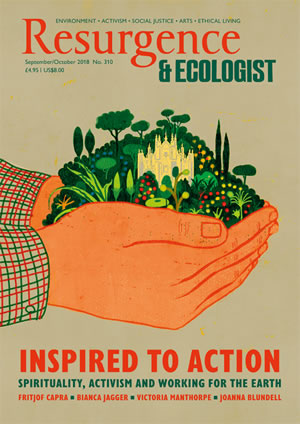What Are You Doing with Your Life? is a crisp and succinct distillation of Krishnamurti’s thoughts and ideas, which he developed over 60 years. In short paragraphs and under numerous sub-headings, this book deals with some of the most pressing and perennial human problems, such as anger, violence, sorrow, suffering, jealousy, envy, desire and depression.
Krishnamurti explores and explains the causes of these problems and moves on to suggest that the solutions are not to be found outside ourselves. No guru, no cult, no religion, no theory, no dogma and no sect can provide us with the answers. We have to look within: know ourselves, and find freedom from fear, which is the root of all sufferings.
Self-knowledge in Krishnamurti’s view, is the key to opening the doors to relationships with people, with ideas, with trees, with the Earth and with the world around us and within us. It is in the mirror of relationships that the self is revealed. Individuals seeking solutions need to be in constant dialogue between the self and the other.
Krishnamurti was born in 1895 in southern India. As a child he was vague, dreamy, and not very bright academically. One day, however, Charles Leadbeater, a theosophist leader, spotted the young Krishnamurti on the bank of a river and was overwhelmed by his aura, his charm and his innate magnetism. Leadbeater recognised something special and extraordinary in this 14-year-old boy and saw him as the ‘World Teacher’ the theosophists had been waiting for.
Krishnamurti was introduced to Annie Besant, another great theosophist, who took charge of him, educated him in England, and groomed him to become World Teacher.
In the early years, Krishnamurti enjoyed all the attention given to him, but in 1922 he had a radical awakening. He woke up to a dazzling new reality. His inner doors of perception opened. This was a deep, even mystical experience.
After seven years of reflection and ingestion, in 1929 he shifted his ground from trying to be a world teacher to becoming a co-explorer of truth. He declared: “I do not want followers,” and “Truth is a pathless land.” Krishnamurti wanted people to be unconditionally and absolutely free from all religious, political or philosophical cages, and free of all identities and allegiances to caste, creed and nationality. He was truly a prophet of freedom.
In the 1930s, Krishnamurti met Aldous Huxley, who became a great admirer. Huxley said that listening to Krishnamurti was “like listening to a discourse of the Buddha – such power, such intrinsic authority...” In the 1960s, the physicist David Bohm met Krishnamurti and they became good friends. They worked together on the themes of wholeness, ecology, spirituality and how physics and metaphysics are two aspects of one single reality. They came to the conclusion that matter and meaning are inseparable.
For Krishnamurti, spirituality had nothing to do with organised religions, blind faith, or belief systems. Spirituality is and should be a way of exploring, experimenting and experiencing physical as well as metaphysical truths.
What Are You Doing with Your Life? is a good place to start in order to dip your toes into the stream of Krishnamurti’s wisdom, but to get deeper and swim in that stream you will need to go to the full text of his books. My favourite is his classic and much acclaimed book The First and Last Freedom. It has a comprehensive foreword by Huxley.
Apart from writing and speaking, Krishnamurti also established four schools for children – two in India, one in the UK and one in the United States – which attempt to set an example of learning about the wholeness of life. In these schools education goes beyond academic excellence and theoretical knowledge.
I met Krishnamurti when I was 22. A mutual friend suggested that Krishnamurti’s renunciation of organised religious order was comparable to my own renunciation of monkhood, so certainly there was much in common between us. My friend introduced us and arranged a walk along the river Ganges in the holy city of Varanasi. For me that was an hour of confirmation that true human relationship must go beyond labels of every kind. There is a field beyond divisions and separations, a field of unity and diversity. I and Krishnamurti met in that field.
Krishnamurti died in 1986, but his thoughts, his wisdom and his avant-garde schools continue to inspire thousands of people, young and old, around the world.







